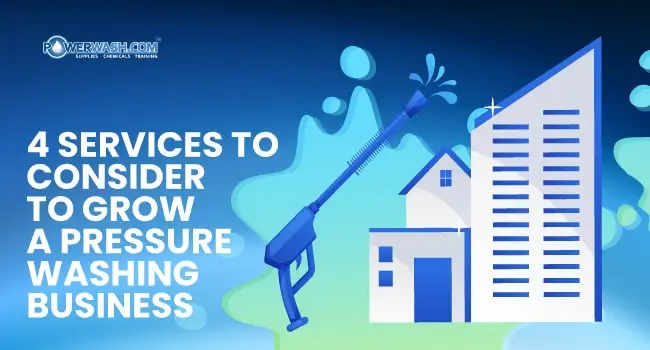Affordable Cleveland Area Powerwash Contractors for Commercial and Residential Projects
Affordable Cleveland Area Powerwash Contractors for Commercial and Residential Projects
Blog Article
Effective Methods for Graffiti Elimination That Recover Surface Areas to Their Initial State
The challenge of graffiti elimination is complex, calling for an understanding of numerous graffiti kinds and the most effective methods for reconstruction. From chemical services that provide to particular paint compositions to push washing approaches that protect the honesty of surfaces, each strategy has its advantages.
Understanding Graffiti Types
Understanding the diverse kinds of graffiti is vital for effective elimination strategies. Graffiti can be broadly classified right into numerous types, each needing various methods for elimination. One of the most typical kinds include murals, tags, and throw-ups. Tags are the easiest kind, containing an elegant trademark or logo design, commonly produced rapidly with spray paint or markers. Their fairly little dimension can make them easier to eliminate yet can still pose difficulties relying on the surface area.
Throw-ups are much more complex and normally entail bigger, bubble-like lettering full of a solitary color. These pieces can cover extra area and might demand various elimination techniques contrasted to tags. Murals, on the other hand, are elaborate art work that can be comprehensive and quite huge, usually appointed or created with authorization. The elimination of murals offers unique difficulties because of the capacity for damages to the underlying surface area and the imaginative value.
Understanding these differences is critical for choosing the right techniques and products for reliable graffiti removal. Each type not just differs in its visual impact but also in the methods that will certainly be most effective in recovering surface areas to their initial condition.
Chemical Removal Techniques
When tackling graffiti removal, chemical approaches are usually the most efficient and reliable strategy for different surfaces. These approaches make use of specialized solutions designed to damage down the chemical bonds in graffiti, making it simpler to eliminate without damaging the underlying material.

It is necessary to choose a chemical eliminator that is compatible with the surface area being treated to avoid damage. Testing the item on a tiny, inconspicuous location prior to prevalent application is recommended. In addition, appropriate protective tools, such as handwear covers and masks, must be used to guarantee safety during the elimination process.
Once the graffiti has been liquified, it is vital to extensively rinse the surface to get rid of any kind of chemical deposit, which can result in staining or deterioration in time (Graffiti Removal in Euclid). Overall, chemical removal approaches use a powerful solution for read review recovering surfaces to their initial state while decreasing prospective damage
Stress Cleaning Methods
While chemical removal approaches are very efficient, pressure washing offers an alternate strategy for graffiti removal that can be equally effective, specifically on resilient surface areas. This method makes use of high-pressure water jets to displace and get rid of graffiti from different products, such as concrete, block, and steel.
The effectiveness of pressure washing depend upon a number of aspects, consisting of the stress setup, nozzle type, and the range where the water is used. Normally, a stress variety of 2,000 to 3,000 PSI is advised for the majority of surfaces, but adjustments may be needed depending on the substrate's level of sensitivity. Using a fan spray nozzle browse around here can aid cover larger areas properly while decreasing the threat of harming the underlying product.
Previous to press washing, it is important to evaluate the graffiti's composition. Water-based paints often react far better to this approach than irreversible or oil-based pens. Moreover, pre-soaking the area with water can improve the removal procedure by lowering paint attachment. After the pressure cleaning is full, surface areas need to be examined for any kind of staying deposit, and a second pass might be required to accomplish optimal outcomes. Overall, stress cleaning is an effective tool in the graffiti elimination arsenal.

Eco-Friendly Solutions
Numerous individuals and companies are progressively seeking environment-friendly services for graffiti removal, acknowledging the significance of decreasing ecological influence. Conventional graffiti elimination techniques often entail severe chemicals that can be unsafe to both the setting and public wellness. In comparison, environmentally friendly solutions utilize eco-friendly and non-toxic materials that successfully remove graffiti without triggering damage to surface areas or releasing hazardous compounds right into the ambience.
One effective method is making use of all-natural solvents, such as citrus-based cleansers, which harness the power of plant-derived ingredients to break down paint without leaving harmful deposits. In addition, baking soda and vinegar mixtures can work as mild abrasives that raise graffiti while being safe for the setting.
One more innovative technique is see this site using green pressure cleaning systems that make use of less water and power compared to traditional techniques. These systems typically integrate specialized nozzles and eco-conscious detergents that improve effectiveness while lowering waste.
Preventative Measures
Preventative measures play a vital duty in combating graffiti vandalism and reducing its incident. By executing calculated approaches, building proprietors and communities can deter prospective culprits and reduce the expenses related to graffiti elimination.
One efficient method is using anti-graffiti finishes, which create a safety layer on surfaces, making it difficult for paint to stick. These coverings can be clear or colored, permitting the original visual to continue to be intact while providing a guard against criminal damage. In addition, the setup of surveillance electronic cameras in high-risk locations can serve as a deterrent, as the visibility of checking technology might dissuade possible culprits.
Area involvement is additionally crucial; organizing neighborhood watch programs or graffiti clean-up events fosters a sense of possession and pride amongst locals. Educational campaigns in schools can increase recognition regarding the negative effects of graffiti, promoting regard for private and public home.
Final Thought
In final thought, the efficient removal of graffiti requires a multifaceted approach that thinks about the type of graffiti and the surface area product. A detailed understanding of these techniques is necessary for attaining optimum outcomes in graffiti elimination ventures.

Report this page